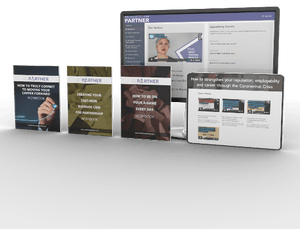In the absence of differentiation, price is the ultimate deciding factor. It’s a painful truth to accept, but that is often what ends up happening with commodity sellers. Nobody wants that, nobody wants to get dragged into a price war where they have to resort to price concessions, but it’s really difficult to differentiate your firm from competitors when they sell the exact same service. So how do you do it? Here is how to differentiate when selling a commodity service.
Scott Keyser, author of “Winner Takes All,” knows his stuff when it comes to pitching and tenders. That’s why we asked hime to run a virtual masterclass on how to improve your tender win rate (and spend less time on responding to tenders overall). This article is based on advice that Scott shared in the questions portion of the virtual masterclass. To listen to the first 20 minutes of the virtual masterclass, click on the video embedded below.
If you listen to the whole of the virtual masterclass you will learn:
- The typical (public sector) bid process
- The mountain analogy: Where many professional services bids go wrong
- Scott’s secret sauce: the 7 ingredients needed to increase your bid win rate
- Tips on winning new work from new clients in this COVID-19 world
- How to deal with pressure on pricing – particularly in this COVID-19 world
- How to sway the decision where price is the top consideration
- How to stop being the ‘spare wheel’ in a pitch meeting
You can know everything there is to know about tenders, such as the process and how to write a successful bid, but if you can’t differentiate your firm from your competitors, then the decision will come down to price. To avoid this here is how to differentiate when selling a commodity service.
3 ways to differentiate and make your firm stand out
 1. Solve your buyer’s problems
1. Solve your buyer’s problems
If you’re wondering how to differentiate when selling a commodity service, it is as simple as making sure that you solve your buyer’s problems. That really is it. The way you respond to that tender, the way you address the buyer’s need/s is crucial, and it may be enough to differentiate your firm.
Every single buyer is different. He or she has subtly different needs, challenges, situations, and wants. The bigger the effort you make to really understand and get to grip with those pain points, the more likely the buyer will want you to help them solve them.
To put it simply, differentiate yourself and your firm by solving the problems your buyers face rather than trying to differentiate commodities. 95% of purchasing decisions are subconscious, so what you’re doing is triggering certain emotions to help drive that decision for them.
“I’ve learned that people will forget what you said, people will forget what you did, but people will never forget how you made them feel”
– Maya Angelou
 2. Check your price is in the right ballpark
2. Check your price is in the right ballpark
This should go without saying but it’s worth a mention. You’re price needs to be in the right ballpark to your competitors.
What you don’t want is to be the cheapest. No one wants to get into a price war, all that does is commodifies your service and it is a grim race to the bottom.
What you do want is for the price between you and your competitors to be similar. That way, if the buyer says, “well, I see no difference in price for what you offer from anyone else,” you can then take the focus off price and help them see the value of your service.
If your price is right and you’re showing the buyer how you provide value and how much better you understand their needs, what you’re doing is closing that gap between price charged and value given.
Read: 15 great tips to help you win a competitive tender/bid
 3. Find out the buyer’s ‘why‘
3. Find out the buyer’s ‘why‘
Another great tip for how to differentiate when selling a commodity service is to find out the buyer’s ‘why.’ When you’re speaking to them, find out what prompted them to go out and tender. Often, many professionals don’t ask this question but it is an extremely valuable use of your time.
By finding out their drive and their ‘why,’ you can really start to understand what ‘value‘ means to them. And this is essential for you to be able to differentiate yourself and your firm. Once you understand what value means to them, you can demonstrate this value that you can bring through your response. You can demonstrate it through you walking the walk and talking the talk when going through the pitch process.
It’s difficult, but you can differentiate your firm
Among buyers, the purchase of a commodity service is seen as a ‘grudge purchase,’ something that nobody really wants to make but they have to. When you pair this with the fact that there’s no real difference between services, this makes selling a commodity service really challenging.
Although it is difficult, it is possible to differentiate and make your firm stand out without risking ‘price’ from becoming the deciding factor. All you have to do is really understand your buyer’s problems so that you can address them and solve them; find out your buyer’s ‘why’ and what exactly ‘value’ means to them, and last but not least, check that your price is within the right ballpark in the market (and definitely not too cheap!).
For more of Scott’s tips on how to write a bid document and increase your tender win rate:
Join our Progress To Partner membership site for $1. The whole of the recording is in the membership site.
If you listen to the whole of the virtual masterclass you will learn:
- The typical (public sector) bid process
- The mountain analogy: Where many professional services bids go wrong
- Scott’s secret sauce: the 7 ingredients needed to increase your bid win rate
- Tips on winning new work from new clients in this COVID-19 world
- How to deal with pressure on pricing – particularly in this COVID-19 world
- How to sway the decision where price is the top consideration
- How to stop being the ‘spare wheel’ in a pitch meeting (his top tips for pitching)
This is what listeners to the virtual masterclass said about it:
“Thanks very much for the session and useful tips!”
“The seven ingredients are brilliant – not sure I have had such a succinct summary before”









